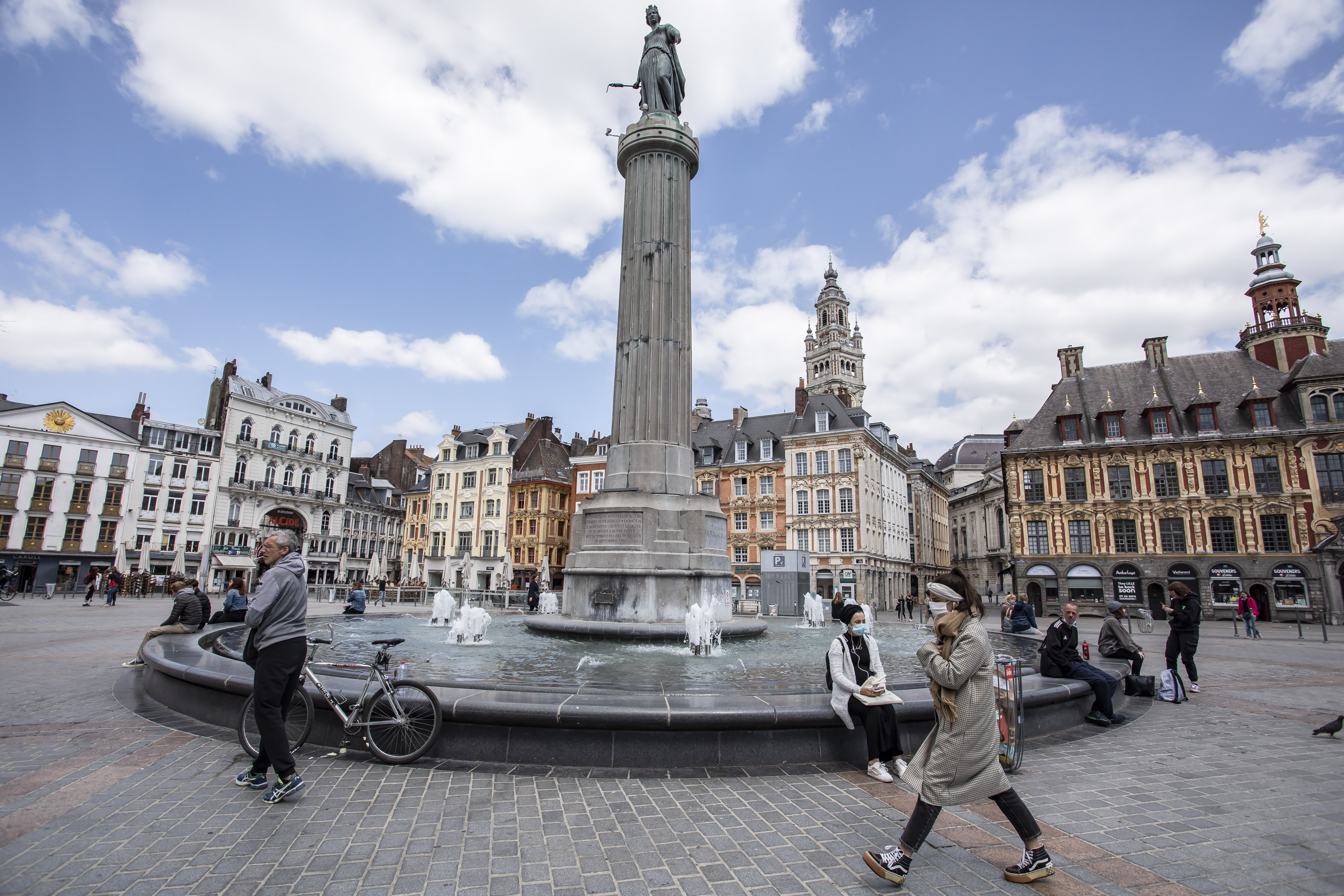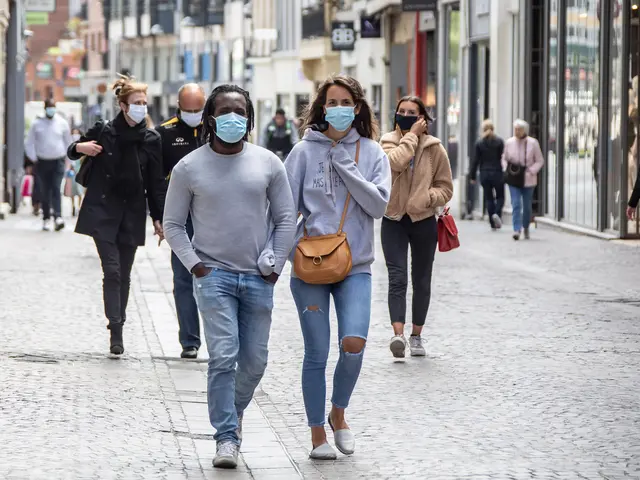Nearly two months after ordering its 67 million population to stay home to stem the coronavirus outbreak, France on Monday cautiously started a gradual process to return to normalcy, easing some restrictions while maintaining others to avoid a new epidemic wave.
"GOOD TO GO BACK TO WORK"
People can move more freely without restriction. More important for them, meetings with family and friends are allowed if the gathering draws no more than 10 people. Providing they put in place safety precautions, businesses resume, factories kickstart long-stalled production lines, pupils go back to schools and shops reopen.
"I'm so excited. It's so good to go back to work after a long period of confinement. I feel that I'm reborn," said Josephine, a florist while receiving a client with a hydro-alcoholic gel and a smile under the mask.
The 45-year-old woman has to clean a visor and the cash register after every client, while stickers on the ground of her shop marked social distancing.
Beatrice, a baker in the pedestrian street in l'Isle-Adam, northern Paris, told Xinhua that she was happy to see shops open and street lively again, even if the masks people wear reminded her that the situation is not the same as before the coronavirus outbreak.
"What we all hope is that as many employees as possible can find their company and their factory resume work...while conditions of health security must be respected," Economy and Finance Minister Bruno Le Maire told BFM Business TV.
In early morning, a relatively small number of people used the capital's buses and metros as people are advised to work from home if they can, to limit contact and stem contagion.
One million stickers on the ground in train and metro stations and seats marked social distancing. At the entrance of each station, passengers are handed with hydroalcoholic gel.
Commuters had to wear masks and need to fill in a document to use public transport in rush hours in early morning and in the evening. Any offender risks to pay 135 euros (145.95 U.S. dollar).
France's first day post-lockdown "is going as it should," said Jean-Baptiste Djebbari, minister of state for transport said, expressing "satisfaction to see that the wearing of the mask is well respected."
The sate-run rail company SNCF said 60 percent of regional network is operational on Monday, while a third of high-speed trains and 25 percent of intercity are running. RATP, Paris public transport firm, said it was operating 75 percent of metro, bus and tramways lines.
Some 1.5 million children, or 22 percent of the country's total number of pupils, are preparing to go to school on Tuesday, and 190,000 teachers resumed work on Monday, according to the Education Ministry's data.
Under the new rules, citizens can only travel up to 100 km unless for professional and urgent reasons, while restaurants, cafes and cinemas are still banned from receiving customers.
The government has opted for gradual strategy to lift the containment measures to avoid a resurgence of the COVID-19. On the color-coded map, which classified regions on the basis of the virus spread and tension in hospitals, 32 departments are in red including the north-eastern region and Ile-de-France.
In the zones of risk, parks, gardens and secondary schools will remain shut. Meanwhile, cafes, restaurants and secondary schools may reopen from early June in "green" zones.
"STAY CAUTIOUS"
In a reminder of the risks involved in easing restriction, three clusters were identified last week in Dordogne, southwestern France, following a funeral, another in the western department of Vendee and in Clamart, Paris suburbs, where eight people tested positive for the COVID-19.
"Thanks to you, the virus has slowed. But it is still there. Save lives, stay cautious," President Emmanuel Macron wrote on a Twitter message.
As of Sunday, France had reported 26,380 coronavirus-related deaths, up by 70 in one day, the lowest daily death toll in nearly two months, while the number of patients in intensive care keeps falling. The total number of confirmed cases had reached 139,063.
Currently, a single positive case in France can infect less than one person, with the R0 rate slightly over 0.6 percent, Health Minister Olivier Veran said.
"We know that when we gradually lift the confinement there will be the R0 rise. What we want is to maintain the rate below 1 so that the epidemic declines," the minister said.
"De-confinement is not a return to the life as before," he said, adding that a lockdown may be instituted again if the virus spreads rapidly after easing restrictions.
To Pascal Crepey, an epidemiologist, the risk of the virus resurgence remains high and depends on the success of the first phase of the de-confinement.
"The risk of an epidemic resurgence exists as long as there is no vaccine neither treatment. All measures that aim to slow the epidemic spread are good, including barrier gestures, mask. If they are respected, surely, they will help to make the virus situation under control," Crepey told Xinhua.
"A strategy based on gradual phases will allow limiting and reacting quickly to a possible rebound of the epidemic," he said.
"We must act carefully and step by step to be able to see what impact the first phase of the de-confinement will have on the epidemic and according to this impact, we can either continue or go back," he added.

People wearing masks walk on the street in Lille, north France, May 11, 2020. (Photo by Sebastien Courdji/Xinhua)
 简体中文
简体中文





